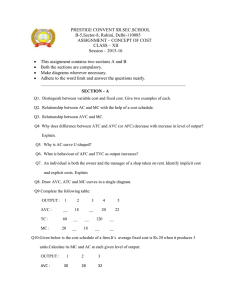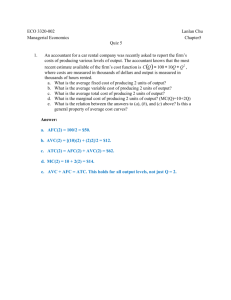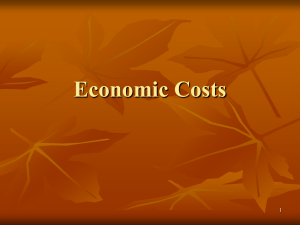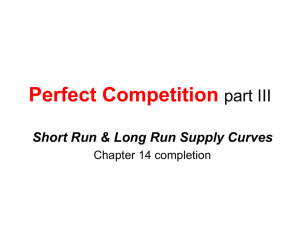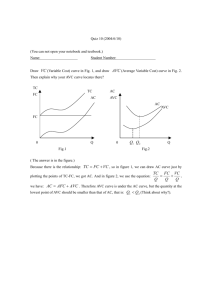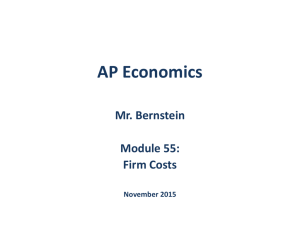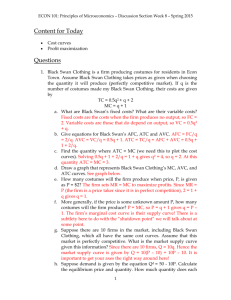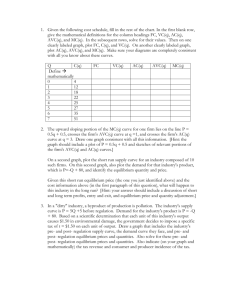Demand and Supply
advertisement
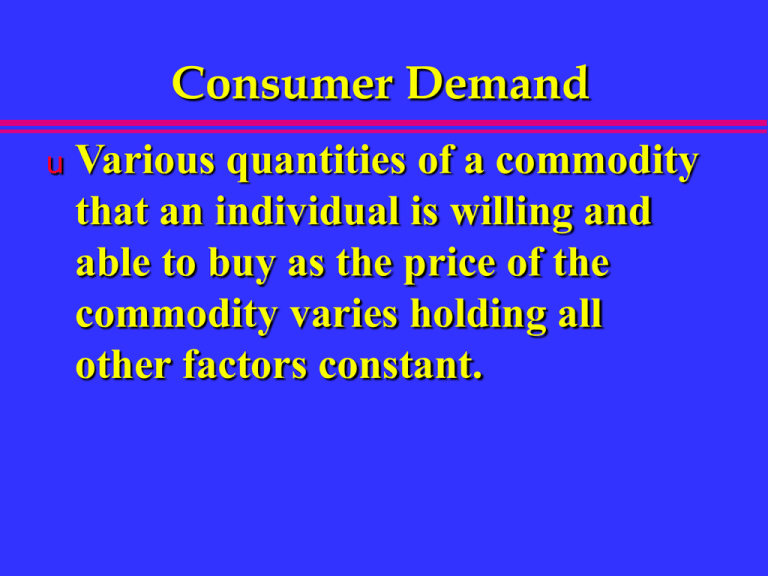
Consumer Demand u Various quantities of a commodity that an individual is willing and able to buy as the price of the commodity varies holding all other factors constant. Consumer Demand Demand begins with individual consumer u Inverse relationship between quantity and price u • Two dimensional, Price and Quantity Downward sloping demand Begin with individual’s utility function and a budget constraint u Substitution effect u • consumers buy what’s cheaper u Income effect • “income” increases if prices fall Retail Poultry Deflated Price and Consumption $1.80 73 $1.70 $1.60 $1.50 74 75 $1.40 70 76 78 71 $1.30 72 77 79 $1.20 80 84 86 88 81 $1.10 82 89 83 85 87 90 91 92 93 94 97 $1.00 95 96 98 $0.90 35 45 55 65 Per Capita Consumption in Pounds 75 Pork Deflated Price and Consumption, Retail $2.00 82 $1.90 83 $1.80 81 80 87 $1.70 86 90 91 $1.60 88 84 85 89 97 $1.50 00 96 98 93 $1.40 92 99 94 95 $1.30 $1.20 $1.10 $1.00 48 50 52 54 56 Per Capita Consumption in Pounds 58 Market or Aggregate Demand Add individual demand curves u Horizontally across consumers u u http://www.aaec.vt.edu/rilp/Demand% 20Changes-2000.pdf (Pages 1-10) Beef and Pork Demand Index, 1997 Base 250 200 150 100 50 Beef Pork 0 1980 1985 1990 Source: Research Institute on Livestock Pricing 1995 2000 Demand is a function of Price of substitutes u Price of complements u Consumer income u Taste and preferences u IS NOT FUNCTION OF THE GOOD’S OWN PRICE u Change in Demand or in Quantity Demanded Moving from A to B due to a price decline is a change in quantity demand. Px A A shift of the demand curve from D1 to D2 is a change in demand. B C D1 D2 Qx Factors effecting aggregate demand for a product Exports u New product development u Advertising u New information u Product differentiation u Income effect on food demand u Food is normal good • Income demand • Particularly important for meats • Emerging economies u Services are a normal good • Income services Inverse Demand u Price is a function of quantity • P = f(Q) u Important in agriculture • Short run supplies are relatively fixed • Prices change to clear the market Supply u The amount of a given commodity that will be offered for sale per unit time as the price varies, other factors held constant. Supply u Derived from cost function • Production function • Input - output relationship u Assume that firms seek to • Maximize profits • Minimize costs u Supply starts will individual firm Production Function Output Total Product Decreasing returns to the input Increasing returns to the input Input Opportunity cost The opportunity cost of commodity A is income forgone by not producing commodity B. u Measures of opportunity cost u • Market value of input • Expected return over other cost of not producing commodity B. Cost Curves u Average variable cost = AVC • Total variable cost / Q • Variable costs change with Q u Average fixed cost = AFC • Total fixed cost / Q • Fixed costs do not change with Q u Average total cost = ATC = AVC+AFC Cost Curves u Marginal cost = MC • Change in total cost by producing 1 more • TC / Q Cost curves Cost MC ATC AVC Q Supply curve MC curve above AVC curve u Upward sloping curve u • Optimal output @ MC = MR • MR = Price => Optimal at MC=Price • The last unit of input just pays for itself Profit u Profit = total revenue - total cost • TR= P x Q • TC = ATC x Q u Profit per unit = Profit/Q • = TR/Q - TC/Q • = P - ATC u Profit maximizing Q • MC=MR=P • Profit/Q = P-ATC at optimal Q Optimal Q at P=MC Cost MC P2 ATC AVC P1 Q1 Q2 Q Market or Aggregate Supply u Combination of individual supply schedules • Add horizontally across firms u Flattens with time • More time to adjust supply Market supply curves Px SShort run SLong run Qx Cost curves and supply u Shut down if P < AVC • Lose on every unit produced • P>AVC make some payment to fixed cost u In the long run everything is variable • Short run defined by having fixed cost u Long run supply curve for individual • Low point on ATC curve Market supply curves S1 Px A S2 Move from A to B is a change in quantity supplied due to a price decline. B C Move from B to C is a shift in supply. Qx Supply Shifts from Change in input prices u in returns for competing enterprises u in technology on yields or costs u in price of joint products u in yield and/or price risk u institutional constraints u Additional references u Reading room Agricultural Product Prices, Tomek & Robinson Chpts 2 and 4.
